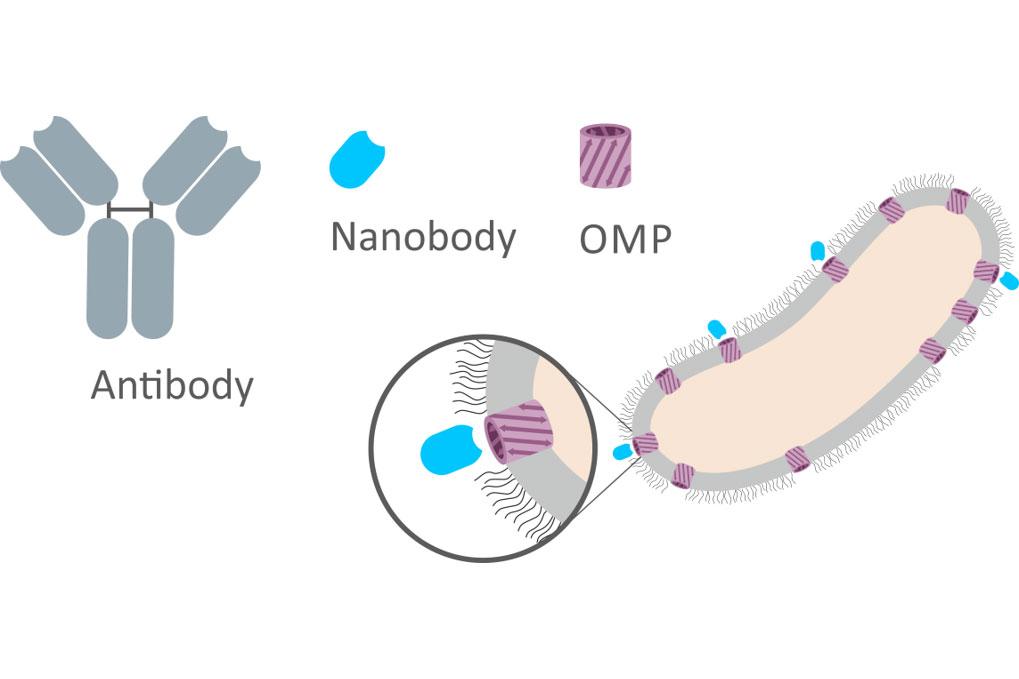Completed project: Detection of pathogens by small antibodies

Nanobodies are small fragments of antibodies that bind selectively to specific bacterial pathogens. These pathogens can therefore be detected much faster than before directly in blood samples.
Caption: Nanobodies are small fragments of antibodies that bind selectively to the surface of bacteria, in this case to OMP (Outer Membrane Proteins).
It can take several days to detect the bacterial pathogen responsible for blood poisoning (sepsis). A lot of time is lost in current tests because the bacteria obtained from a sample first need to be multiplied for a result. This makes timely, targeted treatment with an appropriate antibiotic difficult. As ever more pathogens are resistant to antibiotics, it is increasingly difficult to choose the right treatment without an accurate test. Faster diagnostic methods could make a vital contribution to lowering the high mortality rate for sepsis.
Better binding sites than traditional antibodies
One approach for faster processes is the use of antibodies to show the presence of specific bacterial pathogens directly in a blood sample or capture them from a blood sample. However, traditional antibodies are not suitable for this, as they generally recognise highly variable sugar chains on the surface of the bacteria, which differ between various strains of the same bacterial species. A team headed by Markus Seeger has now taken a new approach. Instead of variable sugar chains, the researchers targeted conserved protein structures, which barely differ within the same bacterial species. The binding sites of these protein structures are inaccessible for whole antibodies, but can be readily located with much smaller antibody fragments known as nanobodies. Seeger and his team therefore developed different nanobodies to detect and capture the clinically important pathogen Escherichia coli, one of the most frequent causes of sepsis. The researchers obtain the nanobodies with the help of alpacas: They inject the animals with components of bacterial pathogens so that their immune systems form antibodies. Parts of these antibodies are then used as nanobodies.
Suitable for diagnostics and food safety
In laboratory testing, clinical E. coli strains are successfully captured and detected using nanobodies. Seeger and his team are now generating further nanobodies to be able to detect a broader spectrum of pathogens. They are also working on simplifying the necessary procedures and processes so that this approach can be used as a tool in routine diagnostics. Applications outside of medical diagnostics, such as monitoring foods or drinking water, are also possible. The approach developed could perhaps be used to significantly speed up continuous measurement of E. coli bacteria in drinking water, which is common in most industrialised countries nowadays. In collaboration with a company, the nanobodies are being used as reagents to rapidly and reliably detect E. coli with a measuring device.
November 2022
